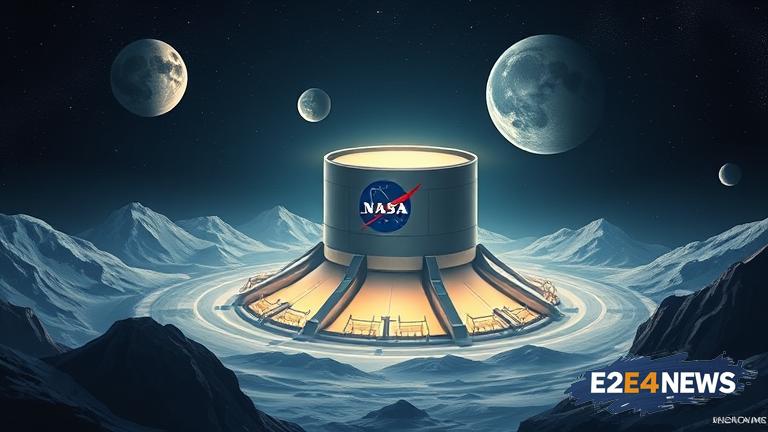NASA has recently placed an order for a nuclear reactor that will be deployed on the Moon, a move that is expected to play a pivotal role in the agency’s ambitious plans to return humans to the lunar surface by 2025. The nuclear reactor, which is being developed by a private company, will provide a reliable and efficient source of power for future Moon missions. This development is a significant milestone in NASA’s Artemis program, which aims to establish a sustainable human presence on the Moon. The reactor will be capable of generating a substantial amount of electricity, which will be used to power the various systems and equipment necessary for lunar missions. The use of nuclear power on the Moon will also enable longer-term missions, as it will provide a consistent and reliable source of energy. Furthermore, the nuclear reactor will be designed to be compact and lightweight, making it easier to transport to the Moon. NASA’s decision to use nuclear power on the Moon is a testament to the agency’s commitment to pushing the boundaries of space exploration and development. The Artemis program is a comprehensive effort that involves multiple government agencies, private companies, and international partners. The program’s primary objective is to send the first woman and the next man to the Moon by 2025, with the ultimate goal of establishing a sustainable human presence on the lunar surface. The nuclear reactor is just one of the many critical components that will be required to achieve this goal. NASA is also working on developing new spacecraft, such as the Space Launch System (SLS) and the Orion spacecraft, which will be used to transport astronauts to the Moon. In addition, the agency is developing new lunar landers and rovers that will be used to explore the Moon’s surface. The use of nuclear power on the Moon will also enable the establishment of permanent lunar bases, which will serve as a hub for scientific research, exploration, and development. These bases will be equipped with state-of-the-art facilities and equipment, including laboratories, life support systems, and communication arrays. The deployment of a nuclear reactor on the Moon will also pave the way for future missions to Mars and beyond. NASA’s experience in developing and operating nuclear power systems on the Moon will be invaluable in planning and executing more ambitious missions to the Red Planet. The agency’s use of nuclear power on the Moon is also expected to have significant implications for the development of space-based solar power systems. The technology and expertise gained from this experience will be crucial in developing more efficient and cost-effective solar power systems that can be used to generate electricity in space. In conclusion, NASA’s order for a nuclear reactor to be deployed on the Moon marks a significant milestone in the agency’s Artemis program. The use of nuclear power on the Moon will enable longer-term missions, provide a reliable source of energy, and pave the way for future missions to Mars and beyond. As NASA continues to push the boundaries of space exploration and development, the agency’s commitment to using nuclear power on the Moon is a testament to its dedication to achieving its ambitious goals. The success of this venture will have far-reaching implications for the future of space exploration and development, and will undoubtedly inspire new generations of scientists, engineers, and explorers. NASA’s Artemis program is a shining example of what can be achieved through determination, innovation, and collaboration. The agency’s use of nuclear power on the Moon is just the beginning of an exciting new chapter in space exploration, and will undoubtedly lead to many more groundbreaking discoveries and achievements in the years to come. With the nuclear reactor on the Moon, NASA will be able to conduct more extensive and complex scientific research, which will greatly enhance our understanding of the lunar environment and its potential resources. The reactor will also enable the establishment of a reliable and sustainable communication network between the Moon and Earth, which will be critical for future missions. Moreover, the use of nuclear power on the Moon will provide a unique opportunity for NASA to test and develop new technologies and strategies for deep space exploration. The agency’s experience in operating a nuclear reactor on the Moon will be invaluable in planning and executing future missions to Mars and beyond. In the coming years, NASA’s Artemis program is expected to achieve many more significant milestones, including the deployment of the first lunar lander and the establishment of a permanent human presence on the Moon. The program’s success will depend on the agency’s ability to develop and operate reliable and efficient systems, including the nuclear reactor, which will be critical for providing power and supporting life on the lunar surface. As NASA continues to push the boundaries of space exploration and development, the agency’s commitment to using nuclear power on the Moon is a testament to its dedication to achieving its ambitious goals and inspiring future generations of scientists, engineers, and explorers.
